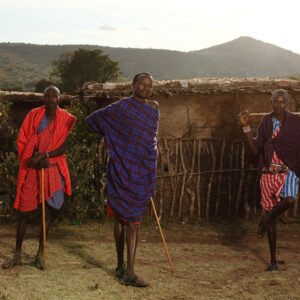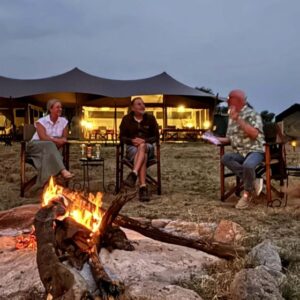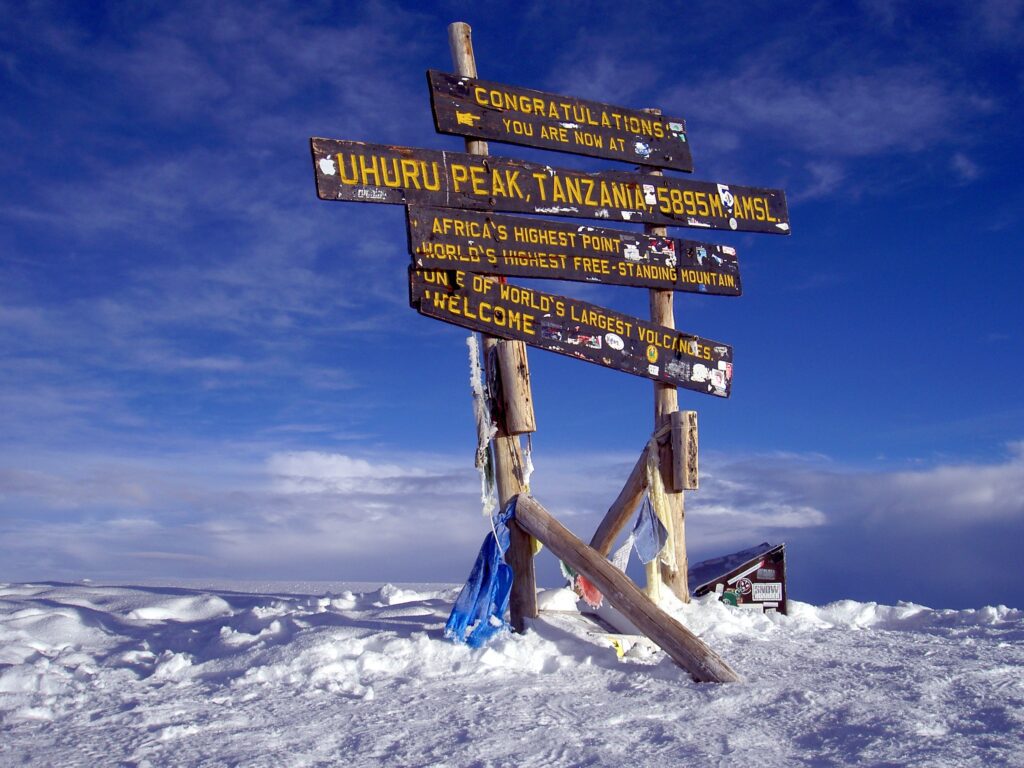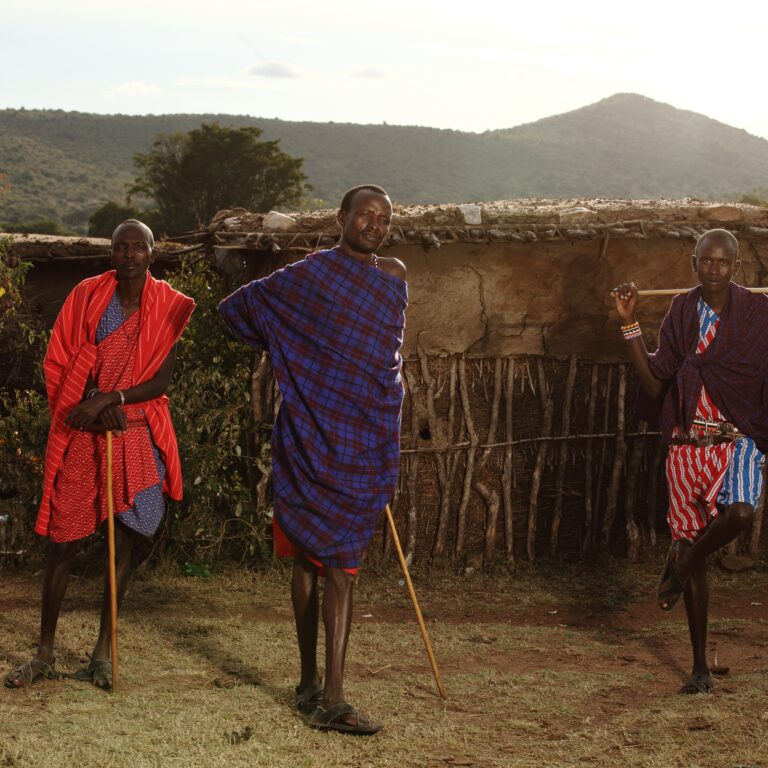When is the best time to visit Serengeti National Park?
The Serengeti, one of Tanzania’s most iconic wildlife destinations, is renowned for its breathtaking landscapes and extraordinary animal migrations. Knowing the best time to visit can enhance your experience. The best time to visit Serengeti National Park for wildlife viewing is generally June to October, during the dry season, when wildlife is more concentrated around water sources and the vegetation is less dense. However, other times offer unique experiences. For the wildebeest migration, December to July is the best time, particularly June and July in the Western Corridor and August and September in the north. January to February is calving season in the southern Serengeti, attracting predators.
Serengeti National Park, located in Tanzania, is one of Africa’s most renowned wildlife sanctuaries. Spanning over 14,750 square kilometers, it boasts diverse ecosystems, from vast savannahs to lush riverine forests. The park is famous for the Great Migration, where millions of wildebeest and zebras traverse its plains in search of greener pastures. Visitors can witness an abundance of wildlife, including lions, elephants, and cheetahs, making it a must-visit destination for nature enthusiasts and adventure seekers alike.
Serengeti Dry Season (June-October). Best for: Wildlife viewing, as animals gather around waterholes and rivers, making them easier to spot. Weather: Sunny, dry, with few mosquitoes and minimal malaria risk. Highlights: Witnessing the wildebeest migration, particularly river crossings in the Western Corridor (June-July) and the Mara River (August-September).
Serengeti Wet Season (November-May). Best for: Observing baby animals, as many herbivores give birth during the green season. Wildebeest Calving: January and February is the calving season in the southern Serengeti, attracting predators.
Serengeti Short Rains: November-December (short rains), March-May (long rains). Birdwatching: Migratory birds are present during the wet season. Low Season: April and May offer lower rates and fewer crowds.
Serengeti National Park during June-October: Dry season, best for general wildlife viewing and the migration. December-July: Wildebeest migration is best seen in these months. January-February: Calving season in the southern Serengeti. March-May: Long rains, lower tourist numbers and rates. Here’s a month-by-month guide to help you plan your Serengeti adventure.
Serengeti in January
In January is the best time to visit the Serengeti, The Serengeti is typically a quiet paradise. The weather is warm, with occasional rain showers bringing life back to the landscape. This month marks the calving season in the southern Serengeti and Ndutu region, when thousands of baby wildebeest are born on the plains every day for wildebeest, and visitors can witness thousands of newborn calves, as well as predators like lions and cheetahs stalking their prey. The lush green surroundings offer excellent photographic opportunities. In January, the Serengeti experiences the start of the dry season, characterized by warm, sunny days and relatively dry conditions. Temperatures range from a high of 29°C (84°F) to a low of 16°C (61°F). While it’s generally dry, there can be occasional afternoon showers. Check out Ndutu Calving Season 8 Day Serengeti Migration Tanzania.
Serengeti in February
February in the Serengeti is a prime time to witness the Great Migration’s calving season and the high concentration of predators. The weather is warm and relatively dry, with temperatures averaging around 29°C (84°F) during the day and 16°C (60°F) at night. The calving season, where hundreds of thousands of wildebeest calves are born, attracts large numbers of predators, making it an exciting time for wildlife viewing. February is peak calving season, making it one of the best months to visit the Serengeti. The vast herds of wildebeest continue to give birth, attracting various predators. Game drives during this month promise thrilling encounters with lions, hyenas, and the infamous leopard. The climate remains favorable, combining warmth with sporadic rains, which keeps the scenery vibrant. Check out the 6-Day Ndutu Wildebeest Migration Calving Safari.
Serengeti in March
As we move into March, the calving season begins to taper, but the Serengeti remains alive with animal activity. The wildebeest start to move westward toward the Moru area. Travelers can still catch sight of young animals. March also sees less crowded conditions compared to the peak months. Though rain increases, it often comes in short bursts, leaving plenty of time for wildlife spotting. Also, March in the Serengeti is generally considered a good time for a safari, although it is the beginning of the rainy season. The “Green Season” brings lush vegetation and abundant wildlife, including the calving season for wildebeest. While the rain can be unpredictable, it doesn’t usually last all day. Temperatures remain pleasant, with averages around 28°C (82°F) during the day and 15°C (59°F) at night. Explore the 7-Day Ndutu Migration Calving Season Safari Itinerary
Serengeti in April
April is generally wetter, marking the start of the long rains, and worse, not the best time to visit Serengeti. While this may deter some visitors, those who do come will find a serene atmosphere with fewer tourists. The greenery is lush, and the wildlife scenery is stunning. Birdwatchers will particularly enjoy these months, as migratory birds are abundant. This period may not be ideal for extensive game drives, but the serenity can be refreshing. April in the Serengeti marks a transition period from the wet to the dry season, offering a unique blend of experiences. While the rains start to taper off, the landscape remains lush and green, providing a picturesque backdrop for wildlife viewing. Temperatures are generally mild, with average highs around 28°C (82°F) and lows around 16°C (61°F).
Serengeti in May
By May, the long rains continue, and wildlife gatherings shift, marking not the best time to visit Serengeti. Migrating herds are moving northwest, which can lead to some fantastic game drives in the western corridors. The rivers swell, presenting unique opportunities for photography, especially of elephants and hippos in the water. While some lodges may close due to the rains, dedicated travelers can enjoy a truly off-the-beaten-path experience. May in Serengeti is generally considered a low season due to the ongoing wet season, offering potential discounts on accommodations and a unique experience for those seeking a less crowded safari. While game viewing might be slightly affected by the lush vegetation and occasional rain, it’s still possible to witness the Great Migration, particularly in the western and central regions of the park. May, the penultimate month of fall, is another warm month in Serengeti National Park, with temperatures ranging from an average high of 25°C (77°F) to an average low of 15°C (59°F).
Serengeti in June
June marks the transition into the dry season, heralding the return of many visitors. The weather is generally mild, and wildlife becomes easier to spot as they congregate near water sources. This month is particularly special for those wishing to catch the Great Migration as wildebeest and zebras prepare to cross into the Maasai Mara. The excitement of the impending migration is palpable. Also, June marks the beginning of the dry season – the peak time to be in the park. There’s little rain, and temperatures range from 27C during the day to 15C at night. In June, the herds move from the Western Corridor into the Grumeti (making the crossing of the Grumeti River), so either of these areas would be a good base.
Serengeti in July
July is one of the prime months for a Serengeti visit. The Great Migration is in full swing, and massive herds of wildebeest and zebras embark on their perilous journey across the rivers. This month witnesses dramatic river crossings, making it a photographer’s dream. The weather is typically dry and cool, making for excellent game-viewing conditions. July is the driest month of the entire year, and also the coolest. While day time highs peak at 26C, night time averages are 14C – and can sometimes be even colder so be sure to pack warm clothing for the evenings and early morning game drives.
Serengeti in August
August brings continued excitement as the Great Migration peaks. Visitors will witness the thrilling river crossings from several vantage points. This month is also excellent for big cat sightings, as predators are highly active. The dry weather persists, and the landscape remains a canvas of golden grasses. It’s advisable to book accommodations early as space fills quickly. August, the penultimate month of winter, is another warm month in Serengeti National Park, Tanzania, with average temperatures ranging from 14 °C (57.2 °F) to 26 °C (78.8 °F).
Serengeti in September
September continues the spectacle of the Great Migration, with herds still crossing into the Maasai Mara. Wildlife viewing is exceptional as animals are concentrated around waterholes. The days are warm and the nights cool, creating comfortable safari conditions. It’s also a great month for birdwatching, with migratory birds returning. September falls within the Serengeti’s dry season. It’s slightly warmer than August, with day time averages of 28C, but nights are still cool, falling down to 15C. The Northern Serengeti is the best region to travel to in September to see the Great Migration herds crossing the Mara River into Kenya.
Serengeit in October
October marks the shift from the peak migration season as herds gradually start moving back down into the Serengeti. The landscape is drying out, making wildlife spotting easier. This month is a photographer’s delight; the colors of the savannah create stunning backdrops for your images. It’s also a better time for viewing cheetahs and lions as they become more active. In Serengeti National Park, Tanzania, October is another warm spring month, with average temperatures ranging from 28°C (82.4°F) to 15°C (59°F). The warmest months are January through March and October, with an average high temperature of 28°C (82.4°F).
Serengeti in November
November heralds the beginning of the short rains, welcoming new life to the Serengeti. The wildlife action begins to pick up again as the rains rejuvenate the landscape. Migratory birds return to fill the skies, and the lush landscape draws animals back to the plains. While the rains might bring muddy conditions, the beauty of a verdant Serengeti is unrivaled. Expect a shift from the dry season’s heat. Averages range from highs in the mid 80s Fahrenheit (around 27°C) to lows in the mid 50s Fahrenheit (around 15°C). Mornings and evenings will be noticeably cooler.
Serengeti in December
By December, the landscape is rich and green, filled with rising humidity, which signals the onset of the rainy season. This can be a quieter time for tourists, allowing for a more intimate wildlife experience. The wildebeest migration is in its early stages, with herds moving towards the southern Serengeti and Ndutu in preparation for calving. The birth of new young animals and the vibrant environment create a unique safari atmosphere. The short rains are often refreshing, making it an ideal time for photographers and nature lovers alike. Temperatures are generally pleasant, with daytime highs around 28°C (82°F) and nighttime lows around 16°C (61°F). It’s wise to book your safari well in advance, especially for Christmas and New Year periods, as these can be popular times.
Want To Visit Serengeti NP?
387 Serengeti Safaris
- Serengeti Safaris & Tours
- Serengeti Honeymoon Safaris
- Serengeti Family Safaris
- Serengeti Private Safaris
- Tour Operators for Serengeti
- Serengeti budget camping Safaris
- Luxury Serengeti Safaris
What Makes the Serengeti National Park So Special
The Serengeti National Park is a breathtaking expanse of savanna teeming with wildlife and natural beauty. Renowned for its vast plains, it hosts the Great Migration, where millions of wildebeest and zebras traverse the landscape in search of greener pastures. Home to an array of species, including lions, elephants, and cheetahs, the Serengeti offers an unparalleled glimpse into the circle of life. Its stunning sunsets and diverse ecosystems make it a haven for nature enthusiasts and adventurers alike.
Getting to the Serengeti National Park
To reach Serengeti National Park, fly into Kilimanjaro International Airport or Arusha Airport in Tanzania. From Arusha, a scenic drive or a short charter flight takes you across the vast plains. En route, pass through the Ngorongoro Conservation Area, spotting wildlife along the way. The journey blends adventure with breathtaking views, building anticipation as you approach one of Africa’s most iconic safari destinations, where endless savannas and the Great Migration await.
Top Serengeti Safari Activities
Embark on unforgettable Serengeti safari adventures, from thrilling game drives spotting the Big Five to witnessing the Great Migration’s dramatic river crossings. Hot air balloon rides offer breathtaking aerial views at sunrise, while guided walking safaris immerse you in the wild’s raw beauty. Cultural visits to Maasai villages enrich your experience with local traditions. Each activity unveils the Serengeti’s majestic landscapes and vibrant wildlife, promising a once-in-a-lifetime journey through Africa’s most iconic wilderness.
Serengeti National Park Itineraries
Serengeti National Park itineraries offer diverse adventures, from short 3-day escapes to extended 7-day explorations. Each journey is thoughtfully crafted, blending game drives, cultural visits, and optional balloon safaris. Travelers follow the rhythm of the wild, tracking seasonal migrations and elusive predators. Whether focusing on the central plains or venturing to remote corners, every itinerary promises intimate wildlife encounters and stunning landscapes. It’s the perfect way to experience the soul of Africa in unforgettable stages.
Serengeti National Park Wildlife & Animals
Serengeti National Park teems with iconic wildlife, from majestic lions and stealthy leopards to massive elephants and roaring herds of wildebeest. The Great Migration showcases over two million animals on the move, shadowed by predators in thrilling pursuit. Zebras, giraffes, cheetahs, and countless bird species add to the park’s rich biodiversity. Every game drive unveils nature’s raw drama and beauty, making Serengeti a paradise for wildlife lovers and photographers alike.
Serengeti National Park Weather & Climate
Serengeti National Park enjoys a warm, temperate climate year-round. Temperatures range from 15°C (59°F) at night to 30°C (86°F) during the day. The dry season, from June to October, offers clear skies and ideal wildlife viewing. Rainy seasons occur from March to May and November to early December, bringing brief but intense showers that rejuvenate the plains. Despite seasonal changes, the Serengeti remains a captivating destination with consistently pleasant weather for safari adventures.
Serengeti National Park Malaria & Safety
Serengeti National Park is generally safe for visitors, with well-managed tourism and guided safaris. However, it lies in a malaria-prone region, so travelers should take precautions, including anti-malarial medication, insect repellent, and wearing long sleeves, especially at dusk. Health facilities are basic in the park, so travel insurance is recommended. Always follow ranger’s instructions, as wildlife encounters can be unpredictable. Staying in reputable lodges enhances both safety and comfort during your Serengeti adventure.
Serengeti National Park Packing List
When visiting Serengeti National Park, pack light, neutral-colored clothing for blending into the environment. Include a wide-brimmed hat, sunglasses, sunscreen, insect repellent, and sturdy walking shoes. Bring layers for cool mornings and evenings, a camera with extra batteries, binoculars for wildlife viewing, and a reusable water bottle. Don’t forget personal medications, a basic first-aid kit, and travel documents. A small backpack is handy for day trips. Pack smart for comfort and unforgettable safari moments.
Serengeti National Park Map – Safari areas, lodges, airports, and more
The Serengeti National Park map highlights key safari areas like Seronera, Western Corridor, and Northern Serengeti, each teeming with wildlife. Luxurious lodges and camps dot these regions, offering prime game-viewing spots. Major access points include Seronera and Kogatende airstrips, linking visitors to thrilling safaris. The Grumeti and Mara Rivers mark migration routes, while roads and trails weave through plains, woodlands, and kopjes, guiding adventurers through one of Africa’s most iconic wilderness experiences.
Serengeti National Park Birds
The Serengeti National Park is a birdwatcher’s paradise, home to over 500 bird species. From the elegant secretary bird striding across the plains to flocks of colorful lilac-breasted rollers, the diversity is breathtaking. Raptors like the martial eagle soar overhead, while vibrant starlings and bee-eaters flit through acacia trees. Wetlands host flamingos and herons, completing the spectacle. Each bird adds life and color to the Serengeti’s iconic landscape, making every visit unforgettable.
Final thought
Each month offers a unique window into the Serengeti’s dynamic ecosystem, catering to different interests and experiences. Whether marveling at the calving season or witnessing the thrilling Great Migration, visiting the Serengeti is always a rewarding adventure. Plan your trip according to the month that aligns best with your wildlife passions, and prepare for an unforgettable journey into one of nature’s ultimate playgrounds.








